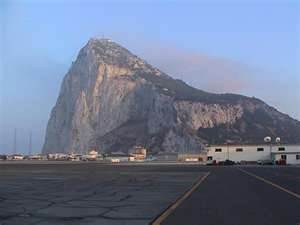
Savannah
When I was in the sixth grade, I read Gone with the Wind for the first time. I read it for two reasons. The first reason was that my older sister had just read it. The second reason was that when I requested it from my school librarian, she told me it was too long for me, over a thousand pages, and I would never make it through.
It took me a week. I read every spare minute I had and can no longer remember how many times I’ve reread it since. Thus, Scarlet O’Hara assumed her place amongst the ranks of fictional female characters (after Anne Shirley and before Angelique de Peyrac) who captivated me as a younger reader and who despite all the things that have happened to me in my adult life continue to remain more real to me than many people I’ve known. As the years pass, of course, I don’t think of them quite as often as I used to, but an event, a chance comment, a trip can still suddenly conjure them up for me, as fresh as they ever were, ready to lead me somewhere, to get me to think about something in a way I wouldn’t have been able to without them.
We were in Savannah last week.
Scarlet O’Hara hated Savannah.
She hated going to visit her aunts there, her mother’s sisters, who lived in the high, dark, shuttered rooms of airless mansions. Her aunts lived in these rooms to escape the heat and dust of the nineteenth-century Savannah streets as well as contact with anyone who might sully the purity of their privileged social position. Scarlet, though just as privileged, was a girl from the more-recently-settled red hills of North Georgia and carried in her veins the high spirits of her Irish immigrant father. She dreaded her obligatory visits to Savannah, visits spent with thin-blooded women in closed and stifling parlors where no life seemed to penetrate.
I felt a little like Scarlet O’Hara last week sitting in the dimness of our plush, antique-filled hotel room. Our hotel was not really a hotel, but an elaborate ante-bellum B&B in the Old City. Somehow, however, I had managed to rent a room in what must once have been the servant’s quarters. The room had been advertised as being on the courtyard level, but was in fact in the basement and looked out into the bushes and roots of the mansion’s front shrubbery. Only a muted green light illuminated the heavy mahogany furniture and the champagne color of the walls. It felt like we were living at the bottom of the sea.
Out and about, touring the great houses of Old Savannah, we didn’t seem to be able to rise to the surface of this sea. We tiptoed through one dimly-lit, well-appointed room after another, no longer stifling as they were in Scarlet’s day, but chilly, and requiring a light sweater. In room after room, tall, heavy louvers were pulled tight against the relentless light and heat of the South Georgia sun. Dark wood gleamed, silk upholstery shone, velvet curtains hung in dim stillness.
Even in those great urban rooms of Savannah’s old quarter, the public squares, the light was turned down low. Chandeliers of Spanish moss hung from the gnarled branches of live oaks, natural louvers filtering the air below into a pale green, other-worldly iridescence. You felt as though you might really have been transported back to the nineteenth century. You felt as if time had slowed to a crawl, possibly even stopped altogether.
Down at the river’s edge, a place which in Scarlet’s day would have been piled high with cotton bales, where slaves would have been unloaded and sold, is where the noise and heat and light of modern Savannah finally hit us. Great container ships several stories high laden with goods bound for all the ports of the world sailed past down the Savannah River. Crowds of tourists filled the sidewalks in front of the old warehouses. Restaurants were full of customers. Loud music played.
We walked and read the historical society posters that line the river bank, factoids about Savannah, Georgia, the South. We read that the cobble-stones we were stumbling over were originally ballast out of ships coming into Savannah to load up with cotton or rice. We read that Georgia was originally not a slave state, but her residents petitioned to become one when they could not compete with the lower prices of their slave-owning neighbors. We read that on Christmas Day of 1864, the retreating Confederate troops blew up the bridges they’d erected over the Savannah River and all the boats they couldn’t sail away. When the Union troops entered Savannah, they were astonished at the elegance and luxury there even after four years of war.
History. You felt it. The ache of what was. The ache of what shouldn’t have been.
Out on the barrier islands, we encountered yet another kind of light, the light all those quiet, dark rooms had shielded us from back in the city. This unfiltered sunlight poured down upon us and over the sands and marsh grasses and inland waterways. It shone upon the marinas and golf courses and tennis courts. Here lives the new privileged class, a class whose affluence rests not upon the backs of slaves, but upon the success of diversified portfolios. This new coastal aristocracy (the largest part of which is not Southern) lives in elaborate homes built beneath the oaks and moss of maritime forests, at the edges of alligator-filled lagoons amidst trees full of roosting egrets. Here the rooms of the homes are open to the light and air, to the marsh and forest, the neighborhoods are bucolic, and the difficult past is nowhere to be found.
Not Scarlet’s Savannah, the Savannah she couldn’t stand. A world, perhaps, she would have liked better, a world of movement and oxygen, a world with no time for brooders, and no wish to look back.
It’s hard to say which world I preferred. Both had their points. The carefully defined spaces of Old Savannah. The wild, open marshlands leading out to the sea.
Though I have always been a girl for the small, quiet space.
Which I found. Back in the city. In the back room of a bookstore off Madison Square.
There I sat in a cool, overstuffed chair flipping through new books, hoping, as I always am, to find another character who’ll compel my imagination the way it could be compelled when I was eleven, trying to get back to how it felt when I met Scarlet for the first time in her party dress on her way to the Wilkes’ barbecue, the last barbecue the county had before the war began.





I enjoyed this. You contextualized your visit beautifully by setting it against Gone With the Wind and using the latter to provide the reader with a backdrop for internalizing Savannah. Well done!
You have put the real Savannah in perspective for me. What I’ve heard about the present day city is what you describer as the affluent area. Have not been there. I have read and seen the movie of Gone With The the Wind a few times.
Lisa
Sounds like a great place to visit!
Linda, I love how you used Scarlett as your “tour guide”. You make me feel like I’ve visited Savannah. Evocative writing!